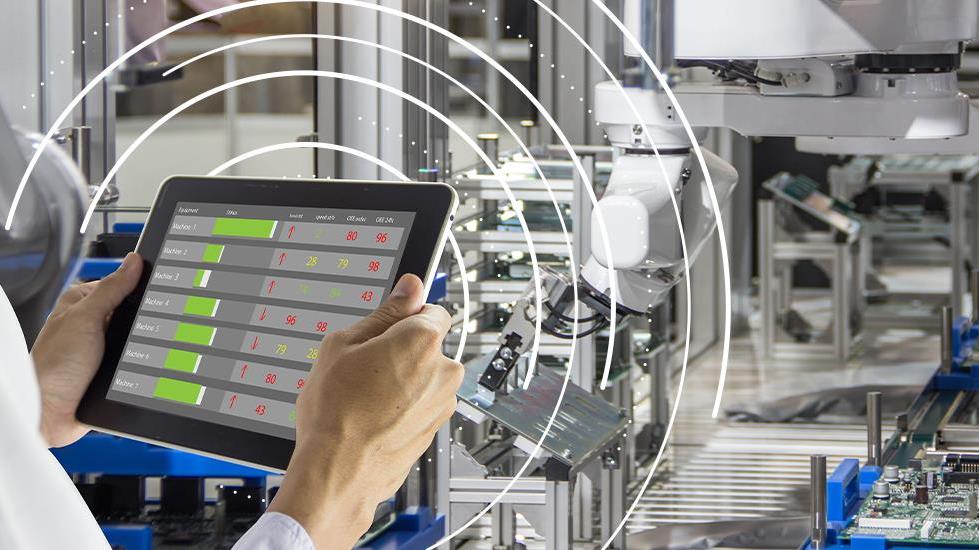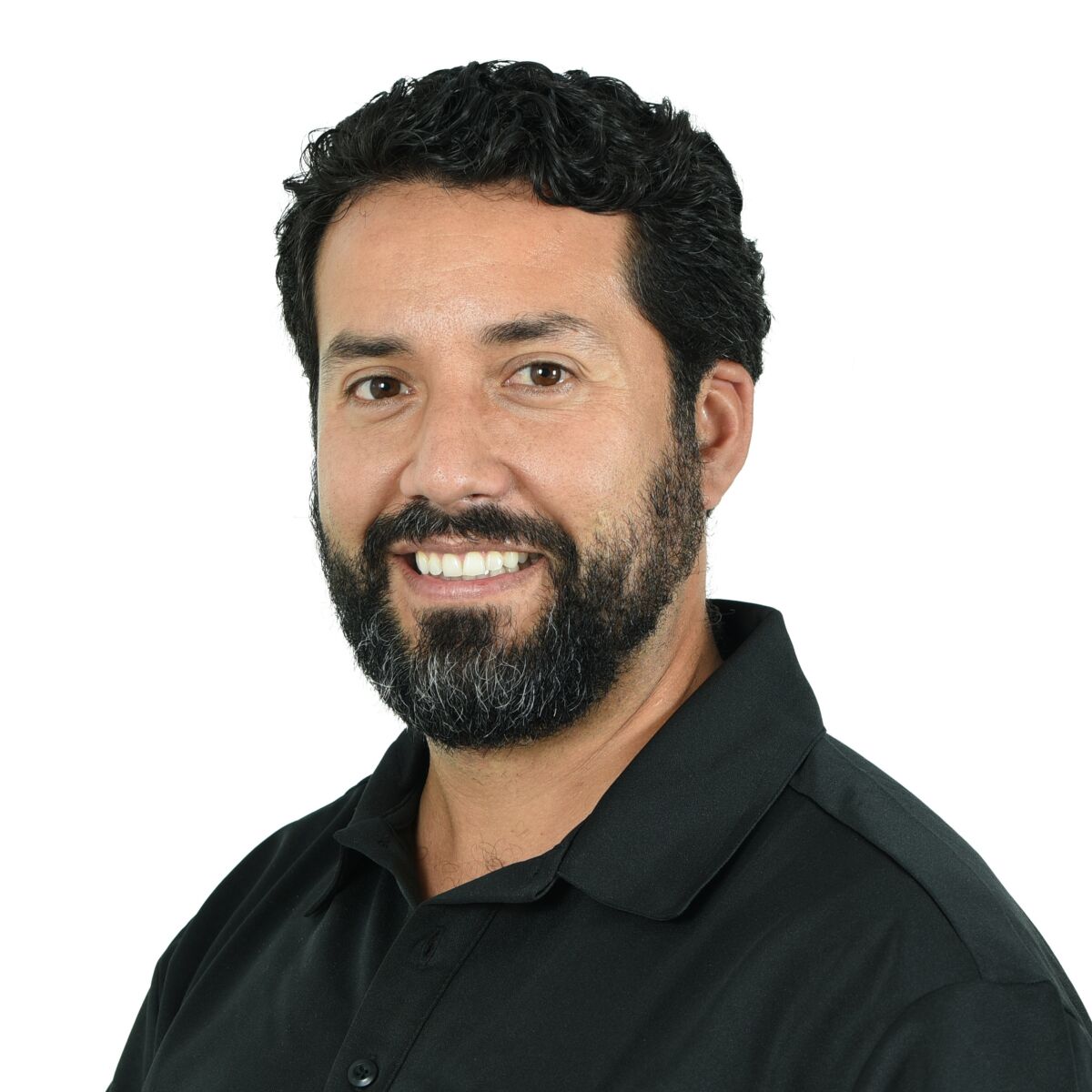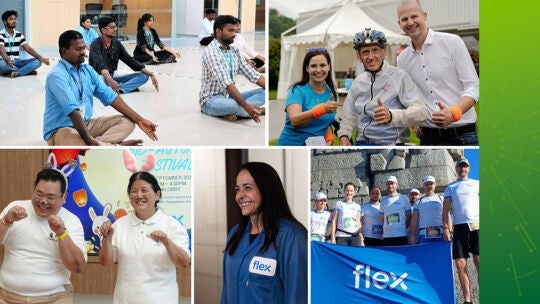
As an organization dedicated to continuous improvement, our deep expertise is guided by Lean Six Sigma principles, agile operations and disciplined execution. Leading this culture of unceasing refinement is Eduardo Toledo, VP of Business Excellence.

We recently sat down with Eduardo, also known at Flex as Eddy, to better understand his role in driving change, both internally and externally, as we provide our customers with ever-increasing levels of quality and efficiency.
You have the unique title of Vice President, Business Excellence. What does that entail?
I’m responsible for Flex’s continuous improvement program, leading our global Lean Six Sigma deployments and our Global Business Excellence (GBE) organization. We partner with our manufacturing sites and business units to further optimize processes and scale best practices throughout the organization.
To that end, our Lean practice allows us to refine the processes and steps that don’t add value, which increases our productivity and efficiency. Our Six Sigma implementation reduces variation and the probability of errors or defects. Then, our Kaizen workshops produce honest, actionable results from work done with Flex team members, customers and suppliers.
The end result is delivering improved quality, efficiency and cost savings to our customers.
You have been at Flex for over 20 years. Have you always worked in continuous improvement?
Actually, I started as a process engineer. I’ve always been fascinated by the ways products are made and the workflows that can be tinkered with and adjusted for better output. When our company started its Six Sigma program, I was identified as one of the first employees to undergo specialized training. Shortly thereafter, we started our Lean program with our GBE group, and I have been working on our continuous improvement journey ever since.
What are the different types of projects you work on?
My team increases quality and efficiency in all facets of the business and more than 100 sites globally. So, we are either a) analyzing an existing process for areas of improvement b) called in during the initial stage of a new customer engagement or process development or c) working shoulder-to-shoulder with local employees on site in Gemba activities to drive physical transformation.
As a recent example of supporting a new program, we were challenged to handle a high volume of products with limited space and investments.
We used Lean tools to identify opportunities for improvement including layout optimization. Process steps for each workstation were defined, standardized and simplified to improve productivity. These modifications led to a 50% reduction in lead-time and our total capacity increased by 47%.
You can contrast that existing program improvement with new product development, especially in medical and automotive, in which we come in at the beginning to set things up right from the onset.
Why is it important you start there at the beginning?
There’s a tremendous amount of value in laying down a production line that has already been assessed through the lens of Lean Six Sigma and configured accordingly, including driving efficiency and curbing costs.
Starting with Lean and 3P — Production Preparation Process — at the beginning allows us to design more optimized workflows rather than adjusting processes incrementally while balancing the same or higher output. With Six Sigma, we work on process characterizations to ensure our control of critical process inputs consistently deliver the highest quality yields.
Manufacturing for medical and automotive is heavily regulated, rightfully so. Thus, we have to validate processes up front as they are very hard to change once validated. Hence, the imperative of a proactive approach to set processes correctly from day one.

Our Lean practice allows us to refine the processes and steps that don’t add value, which increases our productivity and efficiency.
— Eduardo Toledo, Vice President, Business Excellence
What is the most rewarding part of your job?
It starts with the opportunity to make improvements and refine processes, ensuring we do things better on a daily basis. When you step back from the day-to-day, you have the opportunity to see what is Muda, which is waste or non-value added, and build ways of doing things faster and more efficiently.
I really enjoy helping people see that possibility for improvement and the power of collaboration and teamwork – team members become believers themselves and start looking for additional improvements on their own.
For example, when I visit a factory, I love it when someone pulls me aside to show what they are doing new and how they fixed an issue. They are excited and proud to show the improvements they are making and ask for more ideas on what they can further improve. That is incredibly rewarding for me.
We’re seeing significant technological advancements on the factory floor. How do you see Lean and Six Sigma principles working in tandem with cutting edge technologies?
We are the enablers for advanced manufacturing technologies. Our customers need a manufacturing partner with the advanced design and engineering capability to achieve faster time to market while reducing risk.
For example, at some organizations, you would see automation implemented before applying Lean principles. That means they have automated processes that include non-value-added activities and have unfortunately automated waste.
At Flex, we want to Lean out our processes first, so we can remove all the non-value-added activities and steps. Once we perform the heavy lift with Lean at the beginning, we can provide automation that is faster and more cost efficient.
When it comes to advanced manufacturing and IoT, we are using the latter to tap into the equipment to pull data automatically. We then use our FlexSPC tool to analyze variables in the equipment to statistically predict when they may start to fail, increasing our chances of preventing defects from happening.
What are some of the most important lessons you have learned?
That many people don’t like change. After all, it’s not always easy. People want to be able to see tangible results in a different way of doing things. However, once they see the value, they become the biggest believers, promoters and drivers of Lean Six Sigma.
In addition to having executive leadership support, it’s critical that we, as a team, clearly show the value of the change that’s proposed. You have to demonstrate the full benefit of improvements to maximize everyone’s buy in.
Let’s end on a personal note. Can you share a bit more about your background?
I was born and raised in Chile. I met my wife, who is originally from San Francisco, when she was teaching business English in Santiago. I have degrees in computer engineering and business management as well as earned my Lean Six Sigma Master Black Belt certification.
My wife and I share a passion for travel. I’m lucky to live in beautiful Santa Cruz, CA, which offers plenty of outdoor activities. I enjoy mountain biking, surfing, stand-up paddle boarding, playing soccer, hiking and camping, a passion I share with our two children.




